I think there are several potential solutions to your problem.
1 - Converting back to a cartesian image
This is a straightforward solution : convert your polar image back to cartesian coordinates, and compute the distance to your two horizontal lines. You will need, for that, the center and radii of your two circles, which I assume you have already since you have plotted them on the image. Technical solutions for the warping are discussed in this SO question : Reprojecting polar to cartesian grid
2 - Direct geometrical computation
This is even simpler than the first point, and a solution you might implement directly if you don't need further processing.
Again, assuming that for each circle you know the position (X,Y) of its center, as well as its radius R. If you have a point of coordinates (x,y) in the image you can compute the distance to the circle center using a simple Euclidean distance computation : d = sqrt( (X-x)**2 + (Y-y)**2 ). The distance to the circle is then simply R-d. Written in python using numpy, that would give something like :
def distToCircle(pt, center, R):
d = np.linalg.norm(center-pt)
return R-d

